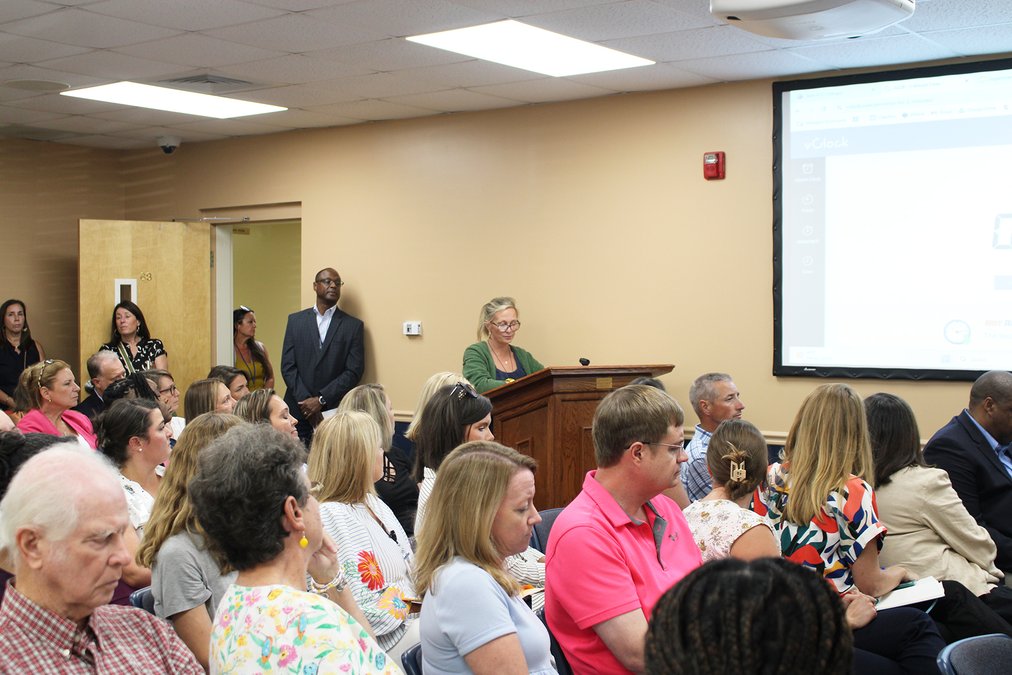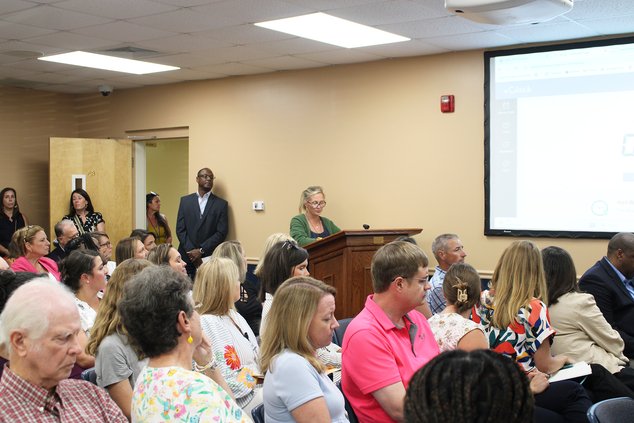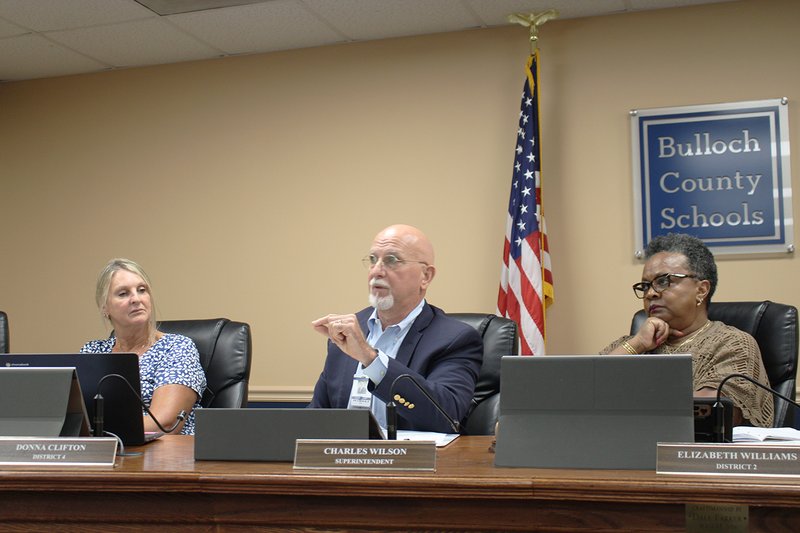Georgia Southern president Dr. Bruce Grube addressed rumors that high admissions standards at the university were restricting the recruiting of athletes, citing that 18 “super exceptions” were granted under Hatcher’s tenure.
Dr. Teresa Thompson, vice president of Student Affairs and Enrollment Management at GSU, recently addressed Grube’s statements, discussing the school’s policies and explaining how the process works.
The university requires a 2.0 core grade-point average and a score of 1,000 on the SAT as a minimum requirement for all students, including athletes. Prospective students scoring below the minimum to the 920 range on the SAT can enroll in the Eagle Incentive Program, offered the summer before their first fall term, and must get a 2.0 GPA in the program to become a full-time GSU student.
For comparison, fellow Southern Conference member Appalachian State differs in its policy. The North Carolina university system provides statewide university minimums to which all members must adhere. The North Carolina system’s minimum GPA requirement is 2.0, and the SAT requirement is 700.
While there are minimums set by the state’s university system, ASU uses a school-specific predicted grade-point index, a formula which uses numerous factors to decide a student’s potential for success specifically at App State. According to Appalachian State senior associate director in the office of admissions Matt Dull, a student’s GPA, SAT and other factors are used in the formula to predict one’s ability to succeed at ASU.
ASU students average 1,158 on the SAT, compared to GSU’s average of 1,107. Of approximately 15,000 applicants in 2009, Appalachian State accepted about 60 percent, of which roughly 2,800 ultimately enrolled.
Any student not meeting the school-specific standards must go before a committee to receive an exception. Overall, ASU allowed 32 exceptions in the 2009 freshman class, of which seven were athletes.
“We wouldn’t make any special exceptions for athletes that we wouldn’t for non-athletes,” Dull said.
All students admitted by this committee are assigned a special mentor with whom they undergo weekly required advising and mentoring sessions once enrolled. According to Dull, students in these programs have a higher retention rate than the general student population of the university.
At Georgia Southern, any student, athlete or otherwise, scoring below a 920 on the SAT can be granted a super exception, which comes from Thompson’s office.
Success programs for “at-risk” athletes are determined on a sport-by-sport basis at GSU. Coaches work with the office of student-athlete services to determine an individual’s program for academic success.
For example, under Hatcher, football players deemed “at-risk” – including exceptions, freshmen and new transfers – were required to attend two-hour study halls Sunday through Thursday, according to Keith Roughton, associate AD for Compliance and Eligibility at GSU.
The NCAA also has different standards to determine an athlete’s eligibility. The governing body for collegiate athletics uses a regressive scale for qualifying athletes – the higher their GPA entering college, the lower the SAT score needed.
For example, a student with a 2.0 GPA must score a 1,010 on the SAT to be eligible to play Division-I athletics at any institution, while a student scoring 3.55 and above can qualify to play with just a 400.
Exceptions cannot be made at any school for athletes who do not qualify for the NCAA’s minimums, and universities differ on their policies for granting school-specific exceptions.
Georgia Southern’s SAT enrollment requirements are the same for all students.
While Thompson mentioned an example of a music student being admitted on exception, she said that they were most frequently used for prospective scholarship athletes.
Thompson talked about bringing in non GSU qualifiers, and the coach of that program’s responsibility for ensuring the player’s success in the classroom.
“Sometimes with the athletes, they will be below the 900s, sometimes well below the 900s, so we would look at their grade-point average, because grade-point average is a predictor (of future academic success),” Thompson said. “If you bring me a kid that has an 800 SAT and has a 1.99 GPA, you know what that means – they are hanging on by the skin of their teeth. Is it fair to put he or she into a position that they cannot be successful? We try to be very careful about that. Now, have we done it? Yes. But once you do that, then comes a tremendous amount of responsibility to the coaches.”
At the press conference, Grube stated that 61 percent – roughly 11 of 18 football exceptions granted over the past three seasons – were no longer with the team.
Players who leave the team, for whatever reason, effect GSU’s Academic Progress Rate, a system recently started by the NCAA. Under the APR system, schools scoring below the set minimum can suffer penalties such as loss of scholarships and post-season bans.
“There were different reasons why (the 11 GSU players) were not on the team,” Thompson said, “but the NCAA doesn’t care why.”
The low success rate of exceptions on the football team caused the administration to tighten up the exceptions brought into the football program.
“Yes, for obvious reasons,” Thompson said when asked if the approach to granting exceptions became more strict in football over the past few years. “The students were not being successful in the structure they were in. With APR standing out there, you live with that. That’s the thing a lot of people don’t understand – a coach can move on, but the APR stays here.
“With flexibility comes accountability. You’ve got to make sure you get this kid through. If that doesn’t happen, yeah the loop does close a little bit.
“Unfortunately, some of these students have not been successful. You start off really flexible, and some of these kids don’t make it. Then you realize that some of the kids won’t make it in the structure that they’re currently in. Therefore, you may close the loop a little bit. The flexibility has been there.”
Thompson indicated that the more success a coach’s exceptions have, the more willing the university will be to grant exceptions. She talked about granting some leniency to first-year football coach Jeff Monken, based on the success she has seen with Monken’s players at Navy and Georgia Tech over the years. She talked about the academic success of students under former GSU coach Paul Johnson at those programs, and indicated Monken’s approach would be similar.
According to NCAA.org, Navy’s current football APR score over a four-year period, last released for the 2007-08 season, is 978. The Division-I average is 939, and the minimum without penalty is 925. Georgia Tech’s four-year average is currently 957, and Georgia Southern currently sits at 913, an eight-point improvement from the previous four-year average. Appalachian State scored a 963.
“What we have to do is trust the coach’s judgment that look, this kid, he’s going to have a hard time, but here’s what we’re going to do to help him be successful,” Thompson said. “And ultimately they prove that. If you find another Adrian Peterson out there, of course you listen to the coach. You say, ‘Look, you’re going to have to really support and help this kid.’”
Thompson talked about first-year basketball coach Charlton Young and the impact she has already seen on his players in the classroom.
“I’ve told him I’ll work with him on getting the students he needs as long as he’ll work on getting them through school,” she said. “Already, he’s set that tone. Within two weeks the professors were noticing that the basketball players were sitting up front in class.”
Georgia Southern holds coaches responsible for a player’s success in the classroom, but ultimately, according to GSU director of athletics Sam Baker, the responsibility falls on the student. The school has to determine the student’s willingness to be successful.
“The intangible is trying to decide how much that individual is willing to work to make that happen,” said Baker. “(Former GSU baseball coach) Jack Stallings, I asked him one time, ‘How many of your students graduate?’ He said, ‘Every one of them that wants to.’”





